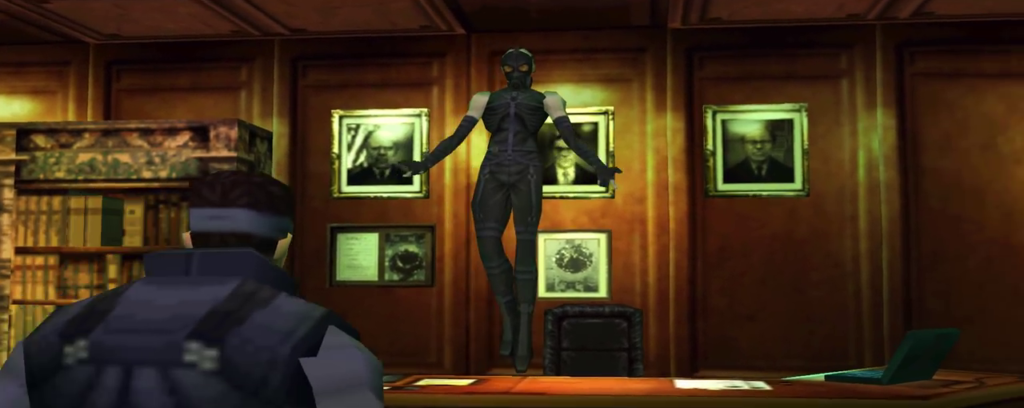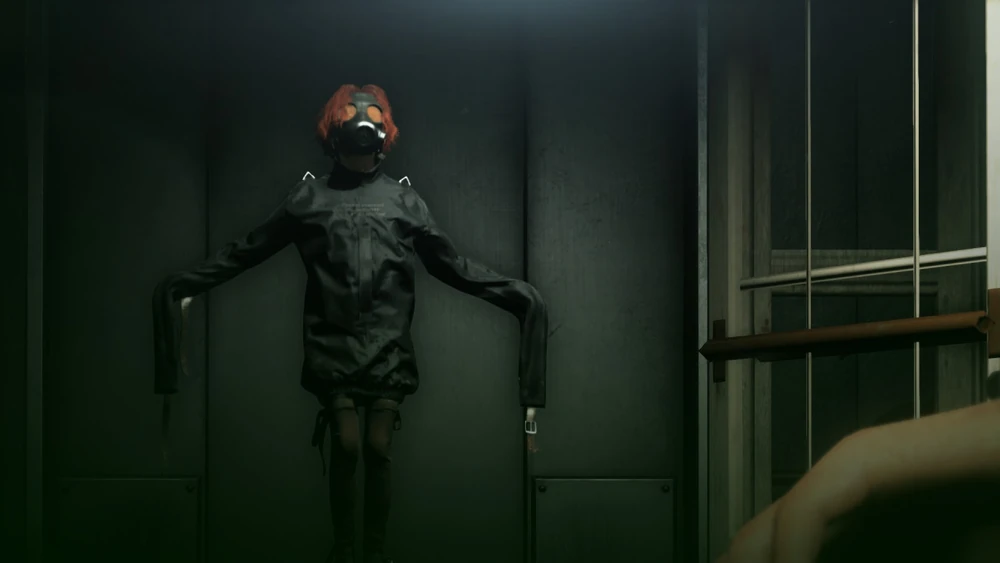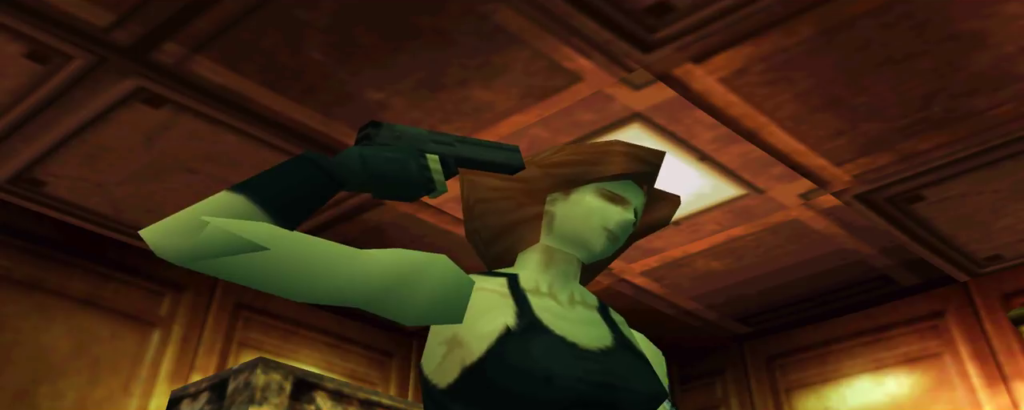
Everybody in their lives have thought at least once what it would be like to have the power to read people’s mind: taking advantage of others in order to succeed in several parts of your life, being it at school, at work or in a more romantic setting.
But is it really worth it?
Humans are animals with a thin dividing line between instincts and reason which separates them from other species. Each one of us can have it placed at different combinations of the two, which results in inner, sometimes dark, thoughts that we want to hide far away from the rest of society. Psycho Mantis knew the impact that this knowledge can have on a mind.
And it got ugly.
Psycho Mantis’s Past
“Each mind that I peered into was stuffed with the same single object of obsession. That selfish and atavistic desire to pass on One’s seed… it was enough to make me sick”
Psycho Mantis, MGS1.
Along with Silent Hill, for which you can read this post, Metal Gear Solid, a Hideo Kojima game, is a good example of what art is. Most of the times, this concept is mistaken for a mere reason to share our opinionated judgement of “beautiful” or “ugly”, “good” or “bad”, “like” or “dislike”, but really, art is everything between these two extremes: it is a medium which serves the purpose of making the audience feel something without the need of standard language use.
We are, after all, complex beings with complex minds and multi-purpose senses.
Encountering Kojima’s Psycho Mantis for the first time makes your skin crawl, putting you, the player, on a vulnerable spot. But who am I even talking about?
We get to know Psycho Mantis in Shadow Moses Island while we control Solid Snake in his quest to stop the terrorist group FOXHOUND from shooting a nuclear missile from the Metal Gear Rex: a dinosaur-shaped tank with the power to shoot nuclear warheads without a need for propulsion, making it hard to trace. A more in-depth, longer description would be preferable, but the Metal Gear Rex is not the protagonist of this article.

Before joining FOXHOUND and gaining his codename, Psycho Mantis used to be known by his other alias, Tretij Rebenok (Third Child). He never was a common soldier, though, as Psycho Mantis was considered to be one of the strongest psychics in the world.
His powers manifested for the first time at an early age, as he successfully read his father’s thoughts… and discovered that his father hated his guts, since he thought young Psycho Mantis to be the reason his wife died at childbirth.
“My mother died in childbirth… and he despised me for it… I thought my father was going to kill me. That’s when my future disappeared. I lost my past as well. When I came to, the village was engulfed in flames…”
Psycho Mantis, MGS1
Sickened, scared, and still not in control of his powers while influenced by strong emotions, Mantis killed everybody. Father included.
Taken by the Russian government, he forcefully started his military career which included organisations as XOF, KGB and CIA.
For more backstory, which is mostly presented in MGSV, I really advise you to read the wiki, but now let’s talk about what made Psycho Mantis a boss for the ages.
Psycho Mantis’ Powers
The first thing that we can state is that Psycho Mantis is not only the scariest member of FOXHOUND, but the strongest as well.
Do not get me wrong, they are all incredibly strong, but they are (aside of Vulkan Raven) essentially humans with scientifically augmented abilities. Psycho Mantis was pretty much Doc. Xavier from X-Men but in a world where he is the only (well, as of MGS1 at least) mutant.
His signature item is this gas mask which he always wears in order to limit other people’s thoughts come barging in his mind, which is actually a big deal considering the context: owning this power implies an extreme receptiveness and sensitivity towards other people’s mind, which may affect his own.
It is, as well, a Sword of Damocles hanging on his head, seen that there is no enjoyment on risking people’s dark thoughts making their way into his own psyche.
Guess what, this is what indeed happened in the year 2000: While working for the FBI to uncover killers’ crimes, he ended up adopting the psychotic trait of one of them.
Now the “psycho” in “Psycho Mantis” had more than one meaning.
Before the Boss Fight: Shattering the Fourth Wall
As Solid Snake, you are led to Psycho Mantis’ office by Meryl, a soldier held captive in Shadow Moses after refusing to take over the facility with the rest of FOXHOUND. A sudden change in her voice, strangely remembering a voice filtered by a gas mask, make us (the player, not Solid Snake) understand that something is going on with her.
She is indeed controlled by Psycho Mantis, which will soon show up to talk to us eager to show us how strong his psychic abilities are. And boy oh boy we were not ready for it.

Before consoles with integrated SSDs, there was a time of Memory Cards, which were plugged into a PlayStation to save game states in their majestic 128kb storage. There, games were saved as blocks, and our dear Psycho Mantis had access to it. He would then tell you what you played, going on by citing a handful of games by name. He will even mock us is we were being killed / discovered many times before this encounter.
A redditor by the name of WINBACK wrote an incredible post about all the possible things Mantis can say while reading the Memory Card, which I really advise as a more in-depth read.
And that’s just the beginning, since Mantis will later tell you that he will make the controller vibrate, which he does.
It was a big deal. In 2023 we are used to games breaking the fourth wall in unusual ways (including games creating secret files in the game folders or haunting your phone, to cite some), but back in 1998 that was some Sci-Fi stuff which later became the main inspiration for these tropes for many games to come.
And citing another Kojima’s masterpiece: “Don’t touch the dial now, we’re just getting started”.
The Famous Boss Fight and Controller Ports
Everything goes black. Our CRT TV gives us a void SCART signal with a green VIDEO caption on the top part… no wait, it’s actually “HIDEO”. Kojima, you sly fox.
Few second and we are back in the game, fighting not only a boss, but the whole room: Psycho Mantis controls various objects in there including paintings and busts, which will throw at us in several patterns, and to add insult to injury, he compliments this feat by occasionally shooting balls of psychic energy
While that is challenging on its own right, a dextrous hand is all it should take to avoid these attacks and defeat him… but we can’t, really. Psycho Mantis told us before: he can read our every move. He manages to dodge everything we throw at him, and there is nothing we can do to avoid defeat.
Or is it?
It’s in this very moment that we can discern two types of players: the one that needed Roy Campbell (our superior and guide for the operation) to scream how to beat him via CODEC after dodging Mantis’s attacks for several minutes, and the guys who had THAT friend at the playground who told you how to do it. For me, it was the latter. Those kids were the OG game guides.
No matter the player, there was only one thing that they could’ve done: we had to manually switch the controller port. In doing so, we were negating Psycho Mantis’ power over our mind, making it impossible for him to predict our moves anymore.
This moment made videogame history.
Up until that moment, videogame as a medium was linked from real life to the game world through some sort of controller: you need to use that in order to do anything inside the game… Be it a joypad, keyboard or a pistol.
But here we are forced to change something in the real life, doing an additional action, which in its simplicity forges a deeper bond between us and the game itself. We are in wonder. We are creeped out. We came to live a moment in gaming that we will never forget.

Conclusion
The rest of the battle will be smooth sails and, after one last attempt of trying to force Meryl to shoot herself (which we will promptly defuse), Psycho Mantis loses his mask, defeated and on the ground. In that moment, his tragic past is revealed to us by his own words. He will then open the door that will lead Snake to his next step in his quest, and we witness an act which is rare in the context of war: mercy.
Snake will put Mantis’ mask back on him, as per his own request, in order to pass his last moments in solitude; no other people’s thoughts interfering with him.
They don‘t hate each other, they just happened to be one against the others, soldiers, following different orders. After all, as said by another hero of the Metal Gear universe: “Enemies change along with the times. The flow of the ages. And we soldiers are forced to play along”.




I feel you completely. I remember my cousin told me about the controller port, and it felt like some secret knowledge to pas down only to the worthy! These were some good times!
PS: let’s not forget the codec frequency at the back of the case!
Hello Zote (by the way, great nickname),
The ’90s hold a special place in my heart, for sure. There is still so much to talk about the Metal Gear series, codec frequency included!
I’ll try my best to do this masterpiece justice in the upcoming articles!
Pingback: Researching the Real-World History of the Powerful Gunblade. - The Analytical Geek
Pingback: Starscourge Radahn Complete Story – Elden Ring Lore
Pingback: 20 Iconic Things That Define Your Favorite Video Game
Pingback: The Gunblade in Real Life – Final Fantasy VIII | The Analytical Geek